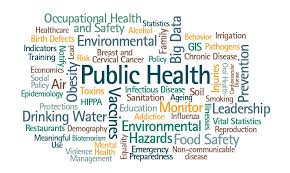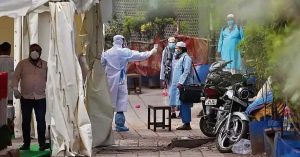 By Nageshwar Patnaik in Bhubaneswar, August 29, 2020: By tradition, human being’s immediate “basic needs” have been food (including water), shelter and clothing. In today’s modern era, the essential list, however, goes beyond food, water, clothing and shelter to include sanitation, education, and healthcare.
By Nageshwar Patnaik in Bhubaneswar, August 29, 2020: By tradition, human being’s immediate “basic needs” have been food (including water), shelter and clothing. In today’s modern era, the essential list, however, goes beyond food, water, clothing and shelter to include sanitation, education, and healthcare.
The COVID-19 crisis clearly demonstrates the dangers of unequal access to these basic services. It also has exposed the structural imbalances between rural and urban, male and female, rich and poor, even in the digital world.
Years of tardy investments in health, education, clean water and sanitation are now putting everyone at risk as the deadly virus spreads its tentacles all over the country making a cycle of infection and reinfection. Most importantly, the COVID-19 pandemic raging across the country has exposed too many chinks in the armour of India’s public health sector.
Prior to the outbreak of the pandemic, India had slipped to 150th place in the health and survival list, to 149th in terms of economic participation and opportunity, and to 112th place for educational attainment, according to the Geneva based World Economic Forum.
Paradoxically for the last 15 years, India’s public expenditure on health as a percentage of Gross Domestic Product (GDP) continues to be a little over one per cent – one of the lowest in the world, according to the National Health Accounts’ estimate.
About 65 per cent of all health expenditure in India (about 2.5 percent of GDP) compared to the world average of just 18.2 per cent is borne privately by households, who barely can afford such luxury. Over 6.3 crore Indians are faced with poverty every year due to health costs alone, according to government estimates.
 To top it, India’s healthcare infrastructure remains highly inadequate and falls short of World Health Organization (WHO) parameters. There are only 0.7 hospital beds per 1,000 people in India with variations across states in contrast to the most populous China, which provides more than three beds per thousand.
To top it, India’s healthcare infrastructure remains highly inadequate and falls short of World Health Organization (WHO) parameters. There are only 0.7 hospital beds per 1,000 people in India with variations across states in contrast to the most populous China, which provides more than three beds per thousand.
Ironically, despite the highest number of medical colleges, India has the lowest number of doctors per thousand of population. India has only 0.857 doctors per 1,000 people and the lowest number of care providers i.e, 1.9 per thousand.
A recent Confederation of Indian Industry (CII) report made it clear that that India’s public health-care system is chronically underfunded, leaving big gaps in the primary healthcare delivery and described the pandemic as a “wake-up call” for India’s health system.
It is crystal clear that with a weak health system in the country, the powers-that-be could not have suddenly stepped up to the challenge of a public health emergency thrown by the ongoing pandemic. Thy had no option but to enforce four lockdowns across the country, which delayed the peaking of positive cases and allowed the governments, both central and states, time to ramp up health infrastructure.
Besides beefing up the government-run hospitals, the authorities temporarily created thousands of critically needed hospital and Intensive Care Unit (ICU) beds to save people’s lives-. including converting a few stadiums into isolation centres, and procure as many ventilators as possible.
 India has about 33.88 lakh total cases of COVID-19 and 61,529 deaths so far. Had it happened in April, when there was a shortage of beds, ventilators, basic PPE kits and absence of any treatment, by now the death toll would have crossed to a figure beyond one’s imagination.
India has about 33.88 lakh total cases of COVID-19 and 61,529 deaths so far. Had it happened in April, when there was a shortage of beds, ventilators, basic PPE kits and absence of any treatment, by now the death toll would have crossed to a figure beyond one’s imagination.
The lockdowns and shutdowns have saved thousands of lives by delaying the peak by a few months, but at the same time underlined the need for stepping up investments to strengthen the public health system to ensure Universal Health Coverage (UHC) and system preparedness to withstand any kind of such public health emergency.
Way back in 2004, the union government announced to raise public spending on health to at least 2-3% of GDP over the next five years. Again, it was reiterated in the 2017 National Health Policy, which commits to increasing public spending on health to 2.5% of GDP by 2025. An as yet, there are no signs of any noteworthy increase in health spending by the government.
This clearly reflects continuation of the colonial era policy of low priority to healthcare notwithstanding prime minister Narendra Modi – the leader of an ostensibly nationalistic Bharatiya Janata Party, pitching for “Atma Nirbhar Bharat”, or self-reliant India.
Absence of pro-active steps has adversely impacted the quality, reach and provisioning of adequate healthcare services. This has led to widespread inequities in distribution of health infrastructure and personnel.
Hence, the first and foremost responsibility before Modi is to resurrect a dreadfully crumbling healthcare system from now onwards. To begin with, health must get priority and spending on this crucial sector must be enhanced to at least 2.5 percent of GDP as per the NHP to ensure UHC as well as to enable the system to endure the worst kind public health emergency.
 Washing hands with soap and water is the single most efficient measure against COVID-19, but 82 per cent of rural households do not have piped running water, according to a 2019 report by the government think tank NITI Aayog. The COVID-19 is further exacerbating the existing water crisis in the country.
Washing hands with soap and water is the single most efficient measure against COVID-19, but 82 per cent of rural households do not have piped running water, according to a 2019 report by the government think tank NITI Aayog. The COVID-19 is further exacerbating the existing water crisis in the country.
However, it is also an opportunity or the Modi government to seize the moment to move forward even with more ambitious initiatives to expand access to water services across the country. The novel coronavirus can spread easily when clean water is scarce. Both urban and rural residents are forced to share taps even as they are asked to practice social distancing.
It is time for the NDA government to strengthen the health system, increase health budget allocation and facilitate capacity building of millions of health workforce, to ensure continued access to essential health services to one and all.


Leave a Reply
Be the First to Comment!